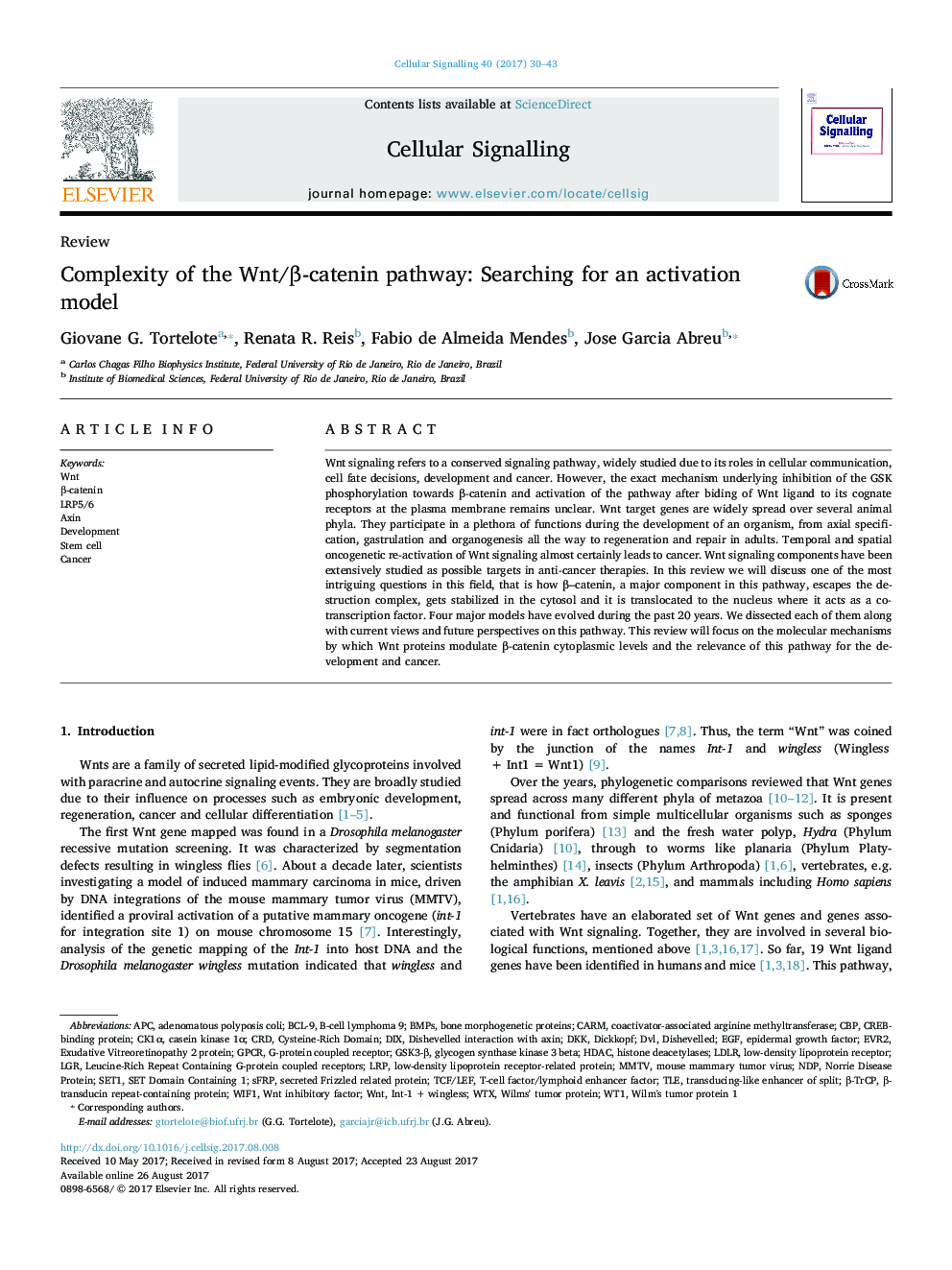| Article ID | Journal | Published Year | Pages | File Type |
|---|---|---|---|---|
| 5509252 | Cellular Signalling | 2017 | 14 Pages |
Abstract
Wnt signaling refers to a conserved signaling pathway, widely studied due to its roles in cellular communication, cell fate decisions, development and cancer. However, the exact mechanism underlying inhibition of the GSK phosphorylation towards β-catenin and activation of the pathway after biding of Wnt ligand to its cognate receptors at the plasma membrane remains unclear. Wnt target genes are widely spread over several animal phyla. They participate in a plethora of functions during the development of an organism, from axial specification, gastrulation and organogenesis all the way to regeneration and repair in adults. Temporal and spatial oncogenetic re-activation of Wnt signaling almost certainly leads to cancer. Wnt signaling components have been extensively studied as possible targets in anti-cancer therapies. In this review we will discuss one of the most intriguing questions in this field, that is how β-catenin, a major component in this pathway, escapes the destruction complex, gets stabilized in the cytosol and it is translocated to the nucleus where it acts as a co-transcription factor. Four major models have evolved during the past 20 years. We dissected each of them along with current views and future perspectives on this pathway. This review will focus on the molecular mechanisms by which Wnt proteins modulate β-catenin cytoplasmic levels and the relevance of this pathway for the development and cancer.
Keywords
Wnt inhibitory factorWIF1LgrCARMT-cell factor/lymphoid enhancer factorCK1αβ-TrCPAXINsFRPWntMMTVWT1NDPCBPTLEGPCRAPCCRDLDLREGFHDACSet1DVLLRPGSK3-βBMPsG-protein coupled receptorLRP5/6TCF/LEFadenomatous polyposis coliDkkdickkopfdishevelledcysteine-rich domainDIXDevelopmentCancerStem cellepidermal growth factorhistone deacetylasesMouse mammary tumor virusCREB-binding proteinβ-transducin repeat-containing proteinSecreted frizzled related proteinLow-density lipoprotein receptor-related proteinbone morphogenetic proteinscasein kinase 1αglycogen synthase kinase 3 betaLow-density lipoprotein receptor
Related Topics
Life Sciences
Biochemistry, Genetics and Molecular Biology
Biochemistry
Authors
Giovane G. Tortelote, Renata R. Reis, Fabio de Almeida Mendes, Jose Garcia Abreu,
